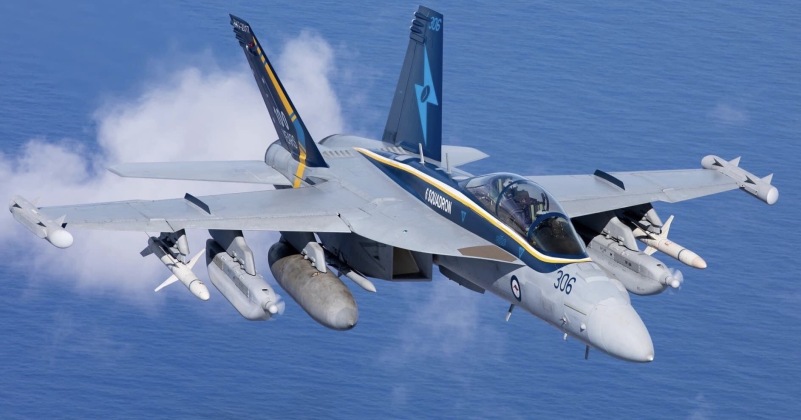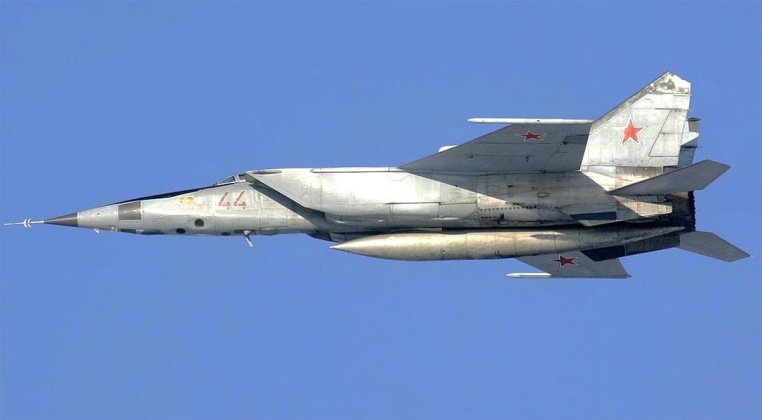News
This Strike Fighter Would Have Been Perfect for War in Ukraine: Why Russia Doesn’t Have Any SEAD Foxbats Left
Since the outbreak of the Russian-Ukrainian War in February Russia’s air defence suppression efforts have been widely criticised as somewhat underwhelming, with Ukraine’s network built up primarily around Soviet-built S-300 variants and supplemented by low altitude handheld systems such as the Stinger continuing to threaten Russian aircraft. Although this was particularly surprising considering the age of the S-300s and other systems relied on, which have just a fraction of the capabilities of even 1990s Russian-built equipment let alone the latest systems produced in the 2020s, it can be partly explained by Russia’s very limited investments in Suppression of Enemy Air Defence (SEAD) assets. Modernisation of Russian tactical combat aviation has been pursued largely with war against NATO in mind, with the very limited ground based anti aircraft capabilities deployed in the West meaning that SEAD was never a significant priority for the Russian Air Force. This contrasts to the United States, with the majority of its potential adversaries relying on ground based air defences at least as much as fighters and interceptors to protect their airspace, and to the Chinese mainland which faces one of the densest air defence networks in the world deployed by the Republic of China Armed Forces on Taiwan.

The United States and China have both developed dedicated air defence suppression aircraft and associated weaponry to tackle integrated enemy networks – namely the U.S. Navy E/A-18G Growler and the Chinese People’s Liberation Army Air Force J-16D. A Chinese naval SEAD aircraft, the J-15D, has also been flying for several years but is not confirmed to be in service. These aircraft use multiple kinds of pods and have other electronic warfare assets built into their fuselages – as can be discerned from their outwards facing antennas from all sides. They deploy an array of anti radiation missile classes which home in on the emissions of enemy ground based radars making then ideal assets for air defence suppression.
While NATO’s lack of major ground based anti aircraft capabilities have been a major factor in Russia’s neglect for SEAD aircraft, it is not the only one with the much smaller size of the country’s defence budget since 1991 having also been a factor. Indeed, the Soviet Union deployed a dedicated SEAD aircraft which was one of the heaviest and costly to operate in its tactical fleet – the MiG-25BM Foxbat which was in production until 1985. The MiG-25 had previously been developed for interceptor, reconnaissance and bomber roles and benefitted from very high survivability as a result of its unmatched Mach 3+ speed and ability to fly well above the Armstrong Limit – at times twice as high. This was demonstrated against the top Western fighters of its era the F-14 and F-15 as well as the lighter F-4 and F-16 over a range of battlefields from Iraq and Iran to Egypt, Israel, Kuwait and Pakistan. Developing the aircraft into an electronic warfare aircraft mirrored what the U.S. and China would later do with their F-18F and J-16 fighters, with the MiG-25BM variant benefitting from electronic warfare equipment allowing it to jam enemy attacks and from a range of standoff anti radiation missiles.

The MiG-25BM was a particularly dangerous electronic warfare aircraft due to the Foxbat’s incredible flight performance and long range, and in the Russian arsenal would have been a potentially ideal asset for war in Ukraine even with only conservative modernisation. The MiG-25’s successor in an interceptor role the MiG-31, although developed for strike, anti shipping and space warfare roles, has not seen a similar anti radiation variant enter service nor has any other class of Russian combat jet. The MiG-25BM’s capabilities were reportedly demonstrated during its brief combat deployments at the end of the Iran-Iraq War, when the aircraft were stationed at H-3 Air Base in Iraq from November 1987 successfully neutralised some of Iran’s best defended targets guarded by multiple fighter squadrons including F-14 Tomcats with AIM-54 missiles. The fact that the MiG-25BM took no losses during these missions and had a 100% success rates indicates that they would be highly capable against Ukraine’s longer ranged air defences today – which have also seen few upgrades since the 1980s placing them on a similar technological level to the F-14s but with more limited capabilities.

The fleet of approximately 40 MiG-25BM fighters had been forward deployed to bases in Belarus by the Soviet Air Force, and were inherited by the Belarusian Air Force when the state disintegrated in 1991 and almost immediately retired. Their specialist role, and the fact that they had some of the highest operational costs of any tactical combat jet in the world, made keeping the SEAD Foxbats in service unaffordable for the small new state. With Russia itself facing sharp military and economic decline, and no longer considering war with NATO as a high possibility, purchasing the aircraft from Belarus may have not even been considered. MiG-25s stayed in limited service in the Russian Air Force until 2013 despite their high operational costs, and had MiG-25BM variants been acquired they may have been kept operational for longer particularly considering that the airframes were newer than other Foxbat variants. Despite a high rate of use the Algerian Air Force kept its modernised MiG-25s in service until mid-2022 indicating that the class could have served into the Russian-Ukrainian War had Russia prioritised this capability.
Russia is expected to begin fielding a dedicated electronic warfare variant of its Su-34 strike fighter, the capabilities of which remain to be seen, but had it anticipated facing a long war with a well prepared if somewhat antiquated Ukrainian air defence network it may well have sought to accelerate work on the much delayed Su-34 variant. Failing this, acquiring at least a small number of Chinese J-16Ds for the mission before the war began may have been another possibility. Currently Russia’s Su-57 stealth fighters are expected to be capable of air defence suppression and have been deployed for this role in Ukraine, with their sextuple AESA radars and low radar cross sections being ideal for such a role. The fighters’ very limited numbers, lack of full operational capabilities and possible lack of anti radiation weapons due to their new status in the air force, means that these are hardly the electronic attack force which Russia needs. The extent to which Russia will invest in this kind of asset, possibly even moving beyond the Su-34 to develop an electronic attack variant of the su-57, remains to be seen.












